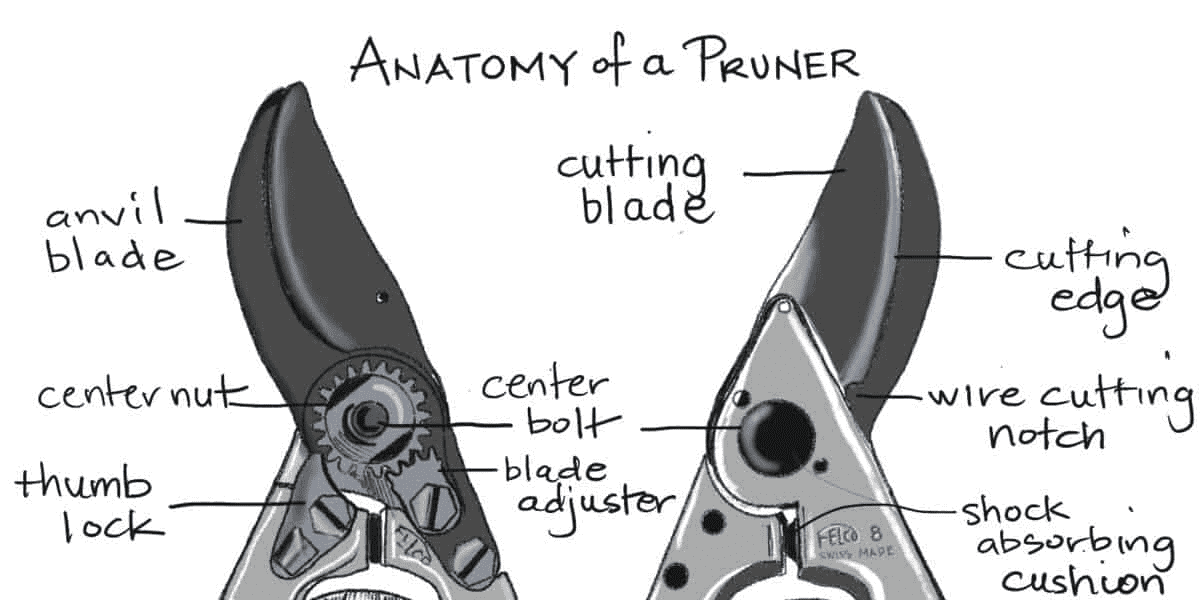by Allison Starcher
A good pair of pruners is beloved by gardeners, treasured like a chef’s favorite knife. Sharp enough to do harm but, in skilled hands, a precise tool. Sometimes referred to by their French name, secateurs, pruners have a spring that holds the handles open so they can be used with one hand.
My favorite pruners are a 30-year-old pair of Felco #8s. Made especially for small hands, they were an investment that has more than paid for itself. Their balanced weight, gracefully curvaceous, poppy-red handles, and Swiss-honed bypassing blades make the chores of picking and pruning a pleasure.
Cleaning a Pruner
One of my annual winter rituals is giving all my cutting tools a thorough cleaning and sharpening. The first thing I do is take a photo of each tool for reference. Then I take them apart (Felco’s come with a nifty tool for this purpose), and put all the parts in a bath of warm water and dish soap.
Be careful if you remove the thumb lock. There is a tiny spring washer that can easily be misplaced (I leave it attached while cleaning mine). Using a wire brush, remove the accumulated sap and grime, then rinse and dry. I have tried a variety of sharpening implements but have settled on Norton spade-shaped, wood-handled stone and an extra-fine diamond sharpener.
Sharpening & Lubricating a Pruner
Now find the beveled edge of the blade and, holding the stone at the same angle, lightly run it along the curve of the blade.
I start with the rougher stone and finish with a few swipes of the finer diamond tool. Do not sharpen the flat side or you may damage the cutting edge.
Fill the little recessed grease pocket between the two blades with new grease. If your pruners do not have this indentation, put a few drops of 3-in-1 Oil or WD40 between the blades. Lubricate the spring.
Refer to your photo to put all the parts back together. Don’t over-tighten. Using the little wrench, tighten the center bolt so that the handles swing open easily but the blades are close enough to to kiss each other. You can tighten and loosen until you find the sweet spot.
Now your pruners will do their job with minimal damage to your plants. When blades are dull they crush the cells, stressing the plants and making them more vulnerable to disease and pests.
It’s a good practice to clean your secateurs often. I keep a bottle of rubbing alcohol on my potting bench and wipe them down with a rag to kill viruses and bacteria. Every now and again, run the sharpening stone over them to freshen up the edge.
I teach primary-school children to garden, and they always beg to use the pruners. When I finally judge the child is sufficiently focused and dexterous enough to make safe cuts, I hand over a tiny pair and hover.
There is nothing like seeing the pride and power they experience squeezing together the handles to make that first cut. I know that feeling. That’s still how I feel when I take my freshly sharpened secateurs for a spin around the garden.

